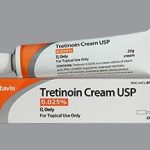Contents
- 1 What Is the Survival Rate of Chordoma?
- 1.0.1 What is the recurrence rate of chordoma?
- 1.0.2 What is chordoma?
- 1.0.3 3 types of chordoma
- 1.0.4 What are the signs and symptoms of chordoma?
- 1.0.5 What causes chordoma?
- 1.0.6 How are chordomas classified?
- 1.0.7 What are the treatment options for chordoma?
- 1.0.8 Subscribe to MedicineNet’s Cancer Report Newsletter
What Is the Survival Rate of Chordoma?
Chordomas are cancerous and sometimes fatal tumors. In the United States, the median survival rate is currently seven years.
- At 5 years, the total survival rate is 68 percent
- At 10 years, the rate is 40 percent
Chordoma prognosis is generally determined by the outcome of the tumor removal surgery.
- Although chordomas are often slow-growing tumors, they are aggressive locally, infiltrate neighboring tissues and organs, and have several local recurrences (return of the tumor). Local recurrence causes tissue damage and, in most cases, death.
- Metastases (spreading to distant parts of the body) happen but are infrequent.
In general, a more thorough and wider removal lengthens the interval between surgery and eventual recurrence.
Studies suggest the following:
- After 5 years
- 67 percent of patients with chordomas at the base of the skull were alive.
- 58 percent of patients’ tumors did not worsen (progression-free survival) compared to the time of diagnosis.
- About 57 percent of patients were alive, and the tumor did not worsen (progression-free survival).
- If more of the tumor was removed, the patient had radiation therapy. There was no invasion of the nose and throat, and the prognosis improved.
Most studies revealed that full excision of skull chordomas improves both five-year progression-free and overall survival rates.
What is the recurrence rate of chordoma?
Knowledge of the extent of chordoma tumor resection helps predict patient outcomes concerning the time the patient would be free from tumor recurrence and determine the necessity for radiation.
Chordomas may recur after:
- 3.8 years if extensively resected
- 2.1 years with subtotal resection followed by radiation therapy
- 8 months with a subtotal excision and without radiation therapy
Because of the high risk of recurrence, frequent follow-ups are required because it is easier to treat a recurrence when it is discovered early. However, only doctors who have treated chordoma before can guide regarding specific prognosis and dangers.
Many patients with chordoma may live for a decade or more with good therapy, and some will be cured.
What is chordoma?
A chordoma is a form of cancer that can develop in the spine and the base of the skull. It is extremely rare, accounting for about one to four percent of all malignant bone tumors.
- Chordomas, despite their sluggish growth, can be difficult to treat due to their proximity to critical structures, such as the spinal cord and brain.
- Chordomas form from residual cells from the notochord, a cartilage-like structure that aids in the formation of the spine during the early stages of embryonic development.
- During the first six months of development, the spine replaces most of the notochord. However, small patches may remain, and it is hypothesized that chordomas may grow in these locations.
Chordomas can occur anywhere along the spine, but most often occur at:
- The base of the spine (sacrum)
- The tailbone (coccyx)
- The base of the skull
3 types of chordoma
- Classic or conventional chordoma
- Classic chordomas are the most prevalent kind of chordoma, accounting for roughly 80 to 90 percent of all cases.
- Chondroid chordoma
- Chondroid chordomas account for 5 to 15 percent of all chordoma instances and are mostly found at the base of the skull.
- This chordoma has some similarities to chondrosarcoma, a more frequent kind of primary bone cancer (which is a tumor developing from the cartilage).
- These similarities are because a chondroid chordoma is made up of both chordoma cells and aberrant cartilage cells.
- Dedifferentiated chordoma
- Dedifferentiated chordomas account for less than 5 percent of all chordoma instances reported.
- They are, however, a more aggressive version of this tumor kind.
- Although dedifferentiated chordomas can occur anywhere on the spine or in the skull, they are most usually found around the base of the spine (sacrum).
What are the signs and symptoms of chordoma?
Chordomas are typically slow-growing, thus symptoms may take some time to manifest. The symptoms are determined by the location of the tumor.
7 symptoms of a chordoma that begins in the spine
- Pain
- Numbness
- Changes in bowel habits, such as constipation
- Problems peeing (passing urine) or controlling the bladder (incontinence )
- Problems walking
- Feeling weak or unsteady
- In men, problems getting an erection
8 symptoms of a chordoma that begins at the base of the skull
- Headaches
- Double vision
- Facial pain or numbness
- Changes in hearing
- Problems swallowing
- Feeling dizzy or unsteady
- Neck pain
- If large enough, they may affect facial sensation or movement, voice, speech, and swallowing function
What Is Polycythemia Vera?
What causes chordoma?
The vast majority of chordomas develop at random and are not caused by an inherited genetic feature. Nonetheless, there are some genetic factors linked to chordoma.
- More than 95 percent of people with chordoma have a single-letter change in the DNA sequence of a gene called brachyury, also called snip (SNP).
- This SNP increases the likelihood of developing chordoma but does not cause chordoma in and of itself.
- This SNP is found in a substantial proportion of the general population, but people who carry it are still quite unlikely to get chordoma (the chances are fewer than two in a million).
- Most chordomas occur in patients between the ages of 40 and 70 years, with a small male predominance. They do occur in younger patients, including children, on occasion.
How are chordomas classified?
Depending on the cause, chordomas are further classified as:
- Sporadic chordoma
- A sporadic chordoma develops in a person who has no family history of chordoma.
- Usually, sporadic chordomas outnumber familial chordomas.
- Familial chordomas are quite rare.
- In these chordomas, many members of the same family have or previously had a chordoma.
- In some of these families, the patient gets extra copies of a gene called brachyury, which is linked to the development of a chordoma.
Chordomas are cancerous tumors that can be fatal. They can spread or metastasize to other parts of the body in some situations. This can happen to up to 30 percent of patients. Chordomas mostly spread to the lungs
What are the treatment options for chordoma?
Surgery, chemotherapy, and radiation therapy are the three primary treatment methods for skull base chordoma. Doctors may advise one or more of these therapies. These tumors have a high recurrence rate and necessitate frequent follow-up and monitoring.
Chordoma surgery
- The most common kind of treatment for bone cancer is chordoma surgery.
- The sort of surgical operation required is determined by the size and location of the tumor.
- The endoscopic endonasal access (EEA) can be used to directly approach chordomas at the base of the skull.
- This cutting-edge, minimally invasive treatment method allows doctors to address the tumor without making an open incision via the natural corridor of the nose. The chordoma is subsequently removed by surgeons through the nose.
- EEA has no healing incisions, no deformity, and a speedier recovery period.
- If one requires additional treatments, such as radiotherapy, they can begin immediately after the EEA surgery.
Radiation therapy
Radiation therapy may be administered by the doctor in the following ways:
- Externally, by directing radiation from an outside source at the chordoma.
- Internally, by directly injecting radioactive material into the body near the chordoma tumor.
- Using stereotactic radiosurgery, a concentrated dosage of radiation is delivered directly to the tumor.
- Proton beam radiation is the preferred kind of radiation treatment for chordomas.
- Because proton beam therapy is much targeted at the tumor, it is frequently possible to treat areas near extremely sensitive structures, such as the spinal cord.
- Overall, this means that fewer healthy cells in the vicinity are exposed to radiation.
- This is especially beneficial for youngsters, whose bodies and structures are still developing.
Chemotherapy
- Chemotherapy is a treatment that employs medications to halt the growth of cancer cells.
- Chemotherapy may be administered orally, intravenously, or directly into the tumor site depending on the type and stage of cancer.
- Research is underway on modern chemotherapy for chordomas.
Targeted therapy
- Research is underway to create targeted medication therapies, which target a specific chemical or substance that may be overexpressed or mutated in this cancer type but not in healthy cells.
- The development of specific pharmacological therapy may help people with chordoma live longer lives.
- Researchers have discovered genes that have elevated expression and activity in chordoma.
- These specific genes could become "molecular targets" for tailored pharmacological treatments, which have the potential to be safer and more specific than traditional chemotherapy medicines.
Chordomas that metastasize (spread) to other areas of the body or become large and begin to press on key portions of the brain, can be fatal. Even if chordomas have not spread, they can become very large and harm nerves in the spine and brain, causing lasting impairment.
Surgical removal of the tumor is common. Taking away as much of the tumor as feasible and some surrounding tissue can prevent it from returning.
Studies are underway on several new chordoma treatments to evaluate if they are safe and effective. These are frequently used to allow patients to try a new therapy that is not available to everyone. The doctor will be able to inform if there is a study that might be a good fit for a person.
Subscribe to MedicineNet’s Cancer Report Newsletter
By clicking "Submit," I agree to the MedicineNet Terms and Conditions and Privacy Policy. I also agree to receive emails from MedicineNet and I understand that I may opt out of MedicineNet subscriptions at any time.
By clicking "Submit," I agree to the MedicineNet Terms and Conditions and Privacy Policy. I also agree to receive emails from MedicineNet and I understand that I may opt out of MedicineNet subscriptions at any time.


